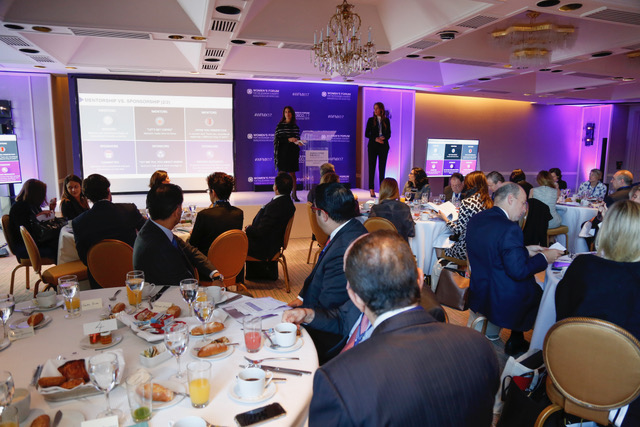The Case for Including White Men in the Corporate Diversity Discussion
 Ernst & Young LLP’s October 2017 survey, “EY Studies Race, Gender and Exclusion at Work,” was an attempt to study different demographic groups’ sense of “belonging” and see if respondents have felt personally excluded at work, and why. The study included a sample size of more than 1,000 full-time employed U.S. Americans.
Ernst & Young LLP’s October 2017 survey, “EY Studies Race, Gender and Exclusion at Work,” was an attempt to study different demographic groups’ sense of “belonging” and see if respondents have felt personally excluded at work, and why. The study included a sample size of more than 1,000 full-time employed U.S. Americans.
Researchers found that nearly one-third of men overall (32 percent) have felt personally excluded in the workplace, and more than one-third of all respondents (35 percent) stated that the increased focus on diversity in the workplace has overlooked white men.
…In today’s complex business world, tapping into the full potential of employees is more important than ever. And employees means all employees. As many research studies have shown, companies can’t innovate – a key business imperative – without the benefit of diverse perspectives. You simply can’t innovate if everyone thinks the same.
At the same time, belonging is a basic human need. Everyone wants to belong, and be part of something larger than themselves. That’s motivating and drives engagement. You can be included and still not feel like you belong. This is why far-sighted organizations have moved beyond focusing solely on diversity, or diversity and inclusion (D&I) to a new, even better goal: diversity, inclusion, and belonging. When you address belonging, you help ensure the best ideas are getting leveraged. The major bonus is that everyone brings their best selves to work and feels engaged to help the organization achieve its goals.

I’ve written about the importance of belonging and highly effective, diverse work teams in other recent posts. A slew of new research inside Google and within other successful corporate teams suggests that eliciting the thoughts and insights of the entire group – rather than letting one “leader” or a few people dominate the discussions – has big pay offs. Its conclusions are about turn-taking: the better and more equitable the turn-taking, the more effective the teams (even more effective than those teams with the smartest people on them). And, those teams that are successful have created psychological safety for all. The same theory applies to diversity and inclusion initiatives: only by getting everyone contributing, engaged, and feeling a sense of belonging can we expect to build smart, innovative teams that produce real results for business.
The executive director and CEO of the Society of Women Engineers, Karen Horting, shared a particularly interesting perspective in an article this month for Forbes.
Horting described efforts from her organization to create “meaningful diversity” in the workforce by tapping more often into the white male perspective – which sometimes dominates engineering firms.
“At the Society of Women Engineers (SWE), our focus on a real-world solution is a decidedly female-oriented approach. What we have found in our experience, however, might surprise you: The key to diversity in the workplace is men – specifically, white men,” Horting wrote. “At SWE, we have implemented a program called Men as Diversity Partners, based on the very premise that, for business to achieve the promise of diversity, men must be willing partners in this pursuit. To come up with this solution, we talked to a lot of men about diversity in the workforce and we listened to them. These men fulfill leadership roles at organizations that are part of SWE’s Corporate Partnership Council. They have helped lead diversity efforts at some of the largest and most complex companies in the industry. They have insightful information to provide on diversity in the workforce and why organizations need to support these efforts to achieve success.”

And of course, Horting is not alone. Another organization designed to bring white men into the conversation about diversity, called White Men as Full Diversity Partners, is working on similar efforts and bringing white men into more frank discussions about diversity in the workforce, with some reported successes, according to this recent article from the Wall Street Journal.
My experience tells me that white men want to get involved, but might feel awkward doing it, wondering how they can contribute or even labeling themselves part of the problem versus a key to the solution.
The Ernst & Young research underscored this perspective. Three quarters (74 percent) of respondents supported an increased focus on diversity and inclusion in today’s workplaces, and nearly three quarters (72 percent) think society’s focus on D&I can help companies build a better working world.
What’s your perspective on diversity and inclusion efforts at your company? What’s working and what needs improvement?
This post is an excerpt of David Grossman’s original post. Read the full post here.